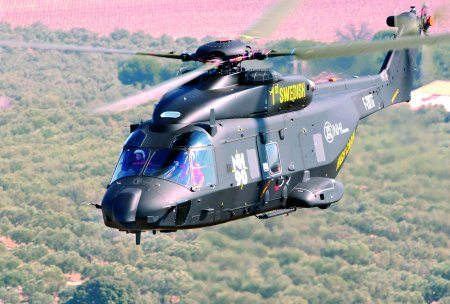Saab struggles to complete Swedish tactical suite
Saab has announced a SKr250 million ($31 million) charge resulting from its continuing difficulties in developing the tactical mission system (TMS) for the Swedish armed forces’ 18 NH Industries (NHI) NH90 transport helicopters, which are due for delivery between 2005 and 2009.

Saab said a recent audit of the programme had concluded: “Development of the [tactical mission] system is greatly delayed, leading to unavoidable additional costs.” Company president Ake Svensson attributed the overrun to “unclear specification at the time of signing the contract and related issues about the schedule”.
Early last year, Saab revealed it was experiencing a “slight delay” to its development of the TMS, which leverages on its experience in developing the JAS39 Gripen fighter. Marketing director Karl-Johan Berzelius says the company cannot disclose the likely length of delay, or whether the financial provision will be its final charge related to the project. However, Sweden’s Defence Materiel Administration says the delay will not affect its armed forces’ plans to begin training activities with the NH90 later this year, albeit using a reduced aircraft specification.
Saab Aerospace in January 2002 received a SKr2 billion contract to develop the TMS command-and-control suite for Sweden’s multirole NH90s. Its aircraft – the first production NH90s to be equipped with a high cabin, measuring 1.8m (5.9ft) – are expected to perform troop transport, combat search and rescue, medical evacuation and anti-submarine warfare duties. Eight of its aircraft will be equipped with Telephonics APS-143B maritime radars and five with Thales-supplied Flash dipping sonars. Five electronic warfare sets will also be procured.
The first edition of hardware for the TMS was scheduled for delivery to NHI this year, ahead of planned flight tests from Eurocopter’s plant in Marignane, France. Sweden’s first production NH90 made its debut flight last March, and the country has an option to expand its fleet by seven more aircraft.
CRAIG HOYLE / LONDON
Source: Flight International























